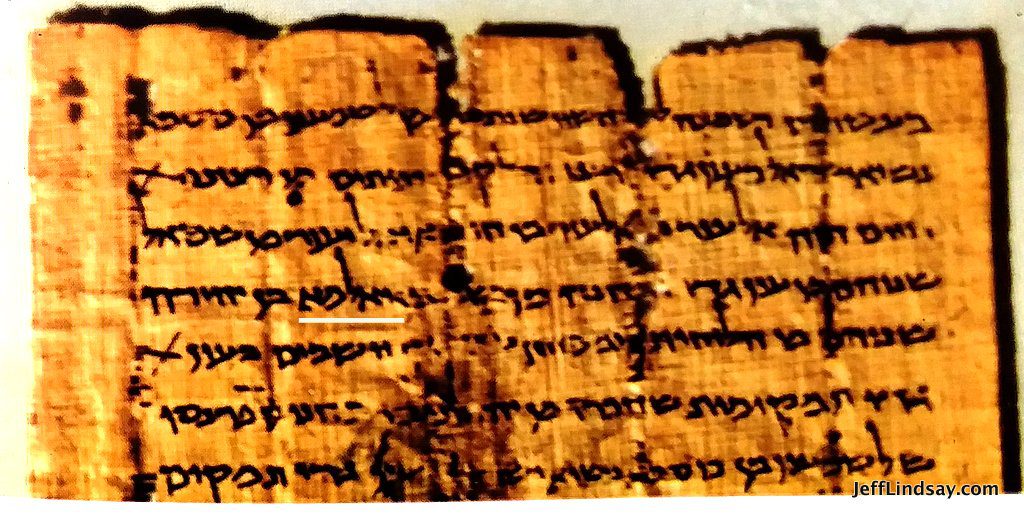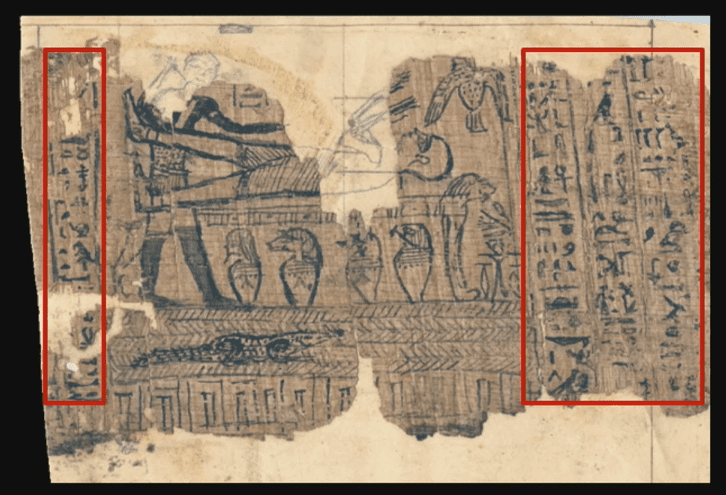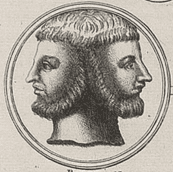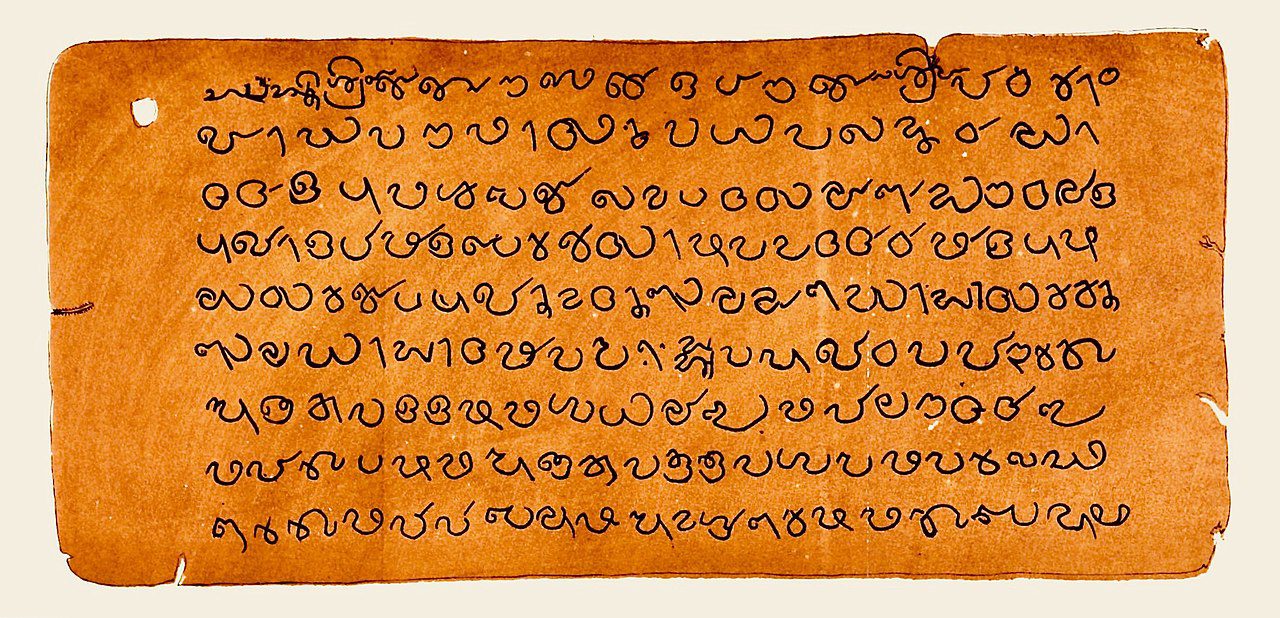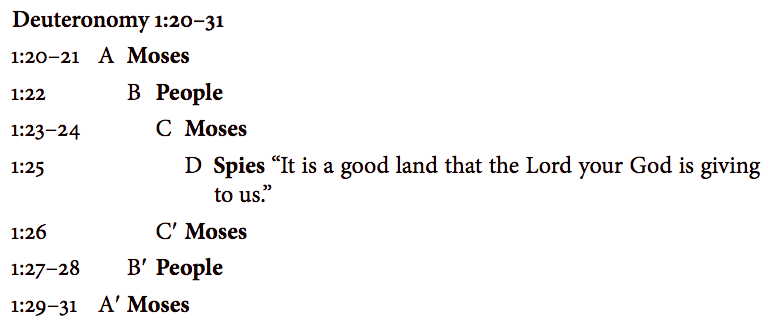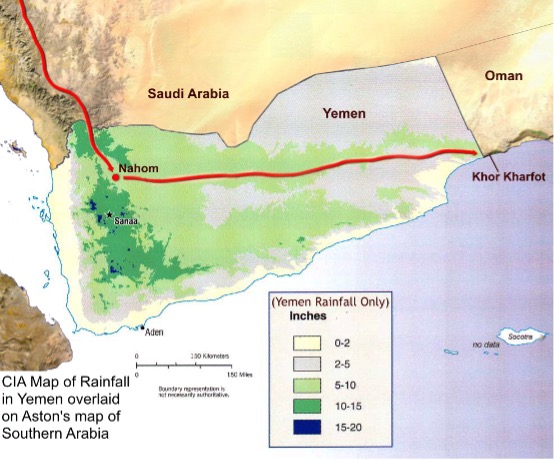Category: Evidence
A Gift from Biblical Reproductions: Alma the Son of Judah on a Bar Kochba Letter
There’s an interesting business, Biblical Reproductions, selling authorized reproductions of artifacts and documents related to the Bible. One of the products is a reproduction of 5/6Hev 44 Bar Kokhba, a…
Why Does the Book of Mormon Say the Nephites “Had Come Down to Believe in Their [the Gaddianton Robbers’] Works”?
No, I’m not saying anything in this post about secret combinations and how to identify them, but rather pointing out a minor detail that is part of a massive pattern…
More on the Book of Abraham Manuscripts: What Spelling Errors Teach Us
I received a kind email from Kyler Rasmussen in response to arguments I have made about the spelling in the book of Abraham manuscripts that are part of the Kirtland…
A Gift From an Early “Anti-Mormon” Attack on the Book of Abraham: Clear Evidence About the Source of Joseph’s Translation
The words of Joseph Smith give us vital evidence about the translation of the Book of Abraham. As Tim Barker demonstrates in a recent FAIR Conference, a large fraction of the characters on the papyrus fragment Joseph allegedly used to translate the Book of Abraham have been placed on Facsimile 2, and Joseph indicated that the explanations for those characters “will be given in the own due time of the Lord.” That is followed by a statement that refers to all the comments made regarding Facs. 2: “The above translation is given as far as we have any right to give at the present time.”
Janus Parallelism in Alma 32 and 33?
Alma uses the verb “spring” in an interesting way in his sermon to the Zoramites in Alma 32 and 33: But if ye will nourish the word, yea, nourish the…
The Jewish Copper Plates of Cochin, India and a Hint of an Ancient Jewish Tradition of Writing on Metal Plates
A recent post here critiqued an attempt to explain the origins of the book of Ether based on inspiration from a rare book, A Key to the Chronology of the…
Four Types of Chiasmus in Deuteronomy and Jeremiah, with Implications for the Book of Mormon
Students of biblical literature and of the Book of Mormon can now access an important new volume on chiasmus, Chiasmus: The State of the Art, just published as a special…
A Most Appropriate Thanksgiving Message for This Day: President Nelson on the Power of Gratitude
I just listened to President Nelson’s short message delivered at noon (Central Time) via Youtube. I always enjoy listening to this kind, wise man, but he greatly exceeded my expectations….
Video of My Presentation with Noel Reynolds, “’Strong Like Unto Moses’: The Case for Ancient Roots in the Book of Moses”
On Sept. 18 and 19, 2020 in Provo, Utah, the Interpreter Foundation sponsored a virtual conference, “Tracing Ancient Threads in the Book of Moses.” Dr. Noel Reynolds and I collaborated…
An Update in the Scholarship Regarding the Archaic Language in the Book of Mormon
One of the most interesting puzzles about the Book of Mormon is the recent discovery that much of the language is archaic in ways not easily explained by imitating the…

